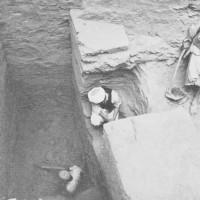- The site of Sorkh Dagh (“Red Hill”), near Nad-i-Ali, in Afghan Seistan.
- Deep pit at Sorkh Dagh penetrated through more than forty-five feet of mud brick platform. The platform apparently forms the entire core of the huge mound.
- Map South Asia
The South Asia Section can attribute its genesis in large part to a belief in the traditions of the ancient Sumerian seafaring merchants. It was vivid tales of Sumerian and Babylonian merchants and “cultural missions” sailing the treacherous route from the Persian Gulf to “the place where the sun rises” which compelled me in 1959 to go to Pakistan and India in search of archaeological evidence to clarify the literary references. The success of the initial Makran coast explorations of 1959 and 1960 led eventually to the establishing of the new South Asia Section in 1963. The principal archaeological aims of the Section have been to (1) investigate the rise of civilization in South Asia and (2) to trace the possible contacts—commercial and cultural—between the Indian subcontinent and the Near East. Most recently the Section has provided opportunities for expanding the University Museum’s field activities into the heretofore neglected area of Southeast Asia. Thus, since 1963 the Section has done field research in Afghanistan, West Pakista, India, Ceylon, Thailand, and Indonesia.
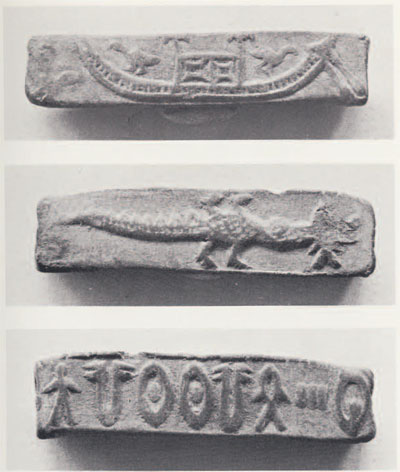
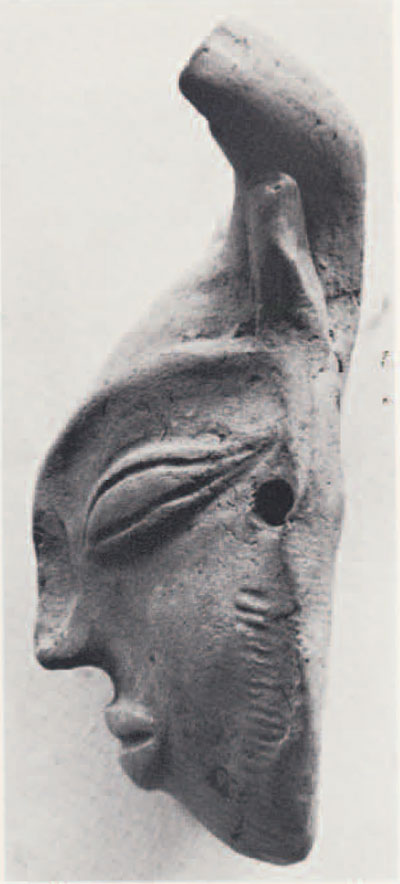
The initial interest was in the area of West Pakistan, the seat of South Asia’s earliest civilization. In early 1964 I made a preliminary survey of the lower Indus Valley and particularly of the ancient city of Mohenjo-daro with Robert Raikes, a professional hydrologist and amateur archaeologist with a great deal of experience in Pakistan. This resulted in a full-scale expedition to Mohenjo-daro during the winter of 1964-65 supported by grants from the JDR 3rd Fund, the the American Philosophical Society, and private contributions. These first major excavations in over thirty years at this impressive site yielded information which is still provoking international recognition. Granted, the recognition is not all favorable but that is to be expected. We were confronted with a monumental—and probably unsolvable—problem, namely, the causes for the decline and disappearance of one of the world’s three earliest civilizations. Consider the academic debates which still surround the question of the fall of Classical Greece and Rome. Contrast this with the problem in South Asia where we have impressive archaeological remains but an as yet undeciphered script—with no intelligible records comparable to those of the Thucydides’s, the Pliny’s, and the Suetonius’s, whose writings have so brilliantly illuminated the Classical scene.
The Mohenjo-daro project provided a unique opportunity to combine traditional archaeology with more scientific types of investigation—specifically those related to the natural sciences. Mr. Raikes, the hydrologist who accompanied me on the initial survey, combined efforts with the Museum’s team to gather data on the possible role of natural forces in the fortunes and misfortunes of the ancient Harappans. It had long been suspected by historians that flooding was a factor in the decline of Mohenjo-daro and the Indus civilization, but the peculiar nature of the flooding and its true impact were not realized. Our investigations provided almost certain proof of cataclysmic flooding in the lower Indus Valley. The exact causes of this flooding—traces of which are present throughout the entire seventy-some feet of occupation levels at Mohenjo-daro—still require extensive investigation. However, the preliminary evidence points to tectonic activities as being largely responsible for the disaster.
Some opposition has been voiced in print to these findings. There has been, understandable, a reluctance to accept “natural disaster” as a major cause for the demise of a civilization. This is especially true with regard to the Indus civilization because of a pet theory that Mohenjo-daro, its sister city Harappa, and in fact the entire civilization fell victim of the invading Indo-Aryan hordes—Aryan nomads who conquered the subcontinent and provided the basic ethnic and linguistic strains for much of the modern population. Dramatic descriptions of the burning and rape of the Indus cities are found in most standard history books and encyclopedias, many of them exaggerated versions of the original theory of the British archaeologist, Sir Mortimer Wheeler. We feel that the evidence upon which the “invasion and massacre” theory was based is highly speculative and largely impossible to verify. Most recently, other theories based on ideas of social and economic decline have been proposed by Dr. Walter Fairservis and Gregory Possehl. Summaries of and references to the rather heated debate concerning the “natural disaster” theory are found in articles by Robert Raikes and myself in American Anthropologist and by Raikes in Antiquity. One virtue of our new approach to the problem is that it can be tested by purely scientific methods whereas the other theories must rely mainly on conjecture. We have not claimed that “Mother Nature” alone was responsible for the demise of the Harappans. Certainly no single cause could ever bring such a vast cultural enterprise to its knees. But the historical narrative must go where the available facts lead, and these present facts point to a crucial and disastrous interplay between natural and human forces in the ancient Indus region. Studies must be extended to other archaeological sites and to other geographical features in the lower Indus Valley. Flood deposits at different sites must be correlated and extensive surveying must be continued both for human habitations and for geological and geographical information. Unfortunately, conditions beyond our control dictated the termination—hopefully temporary—of the Pakistan project. Until such time as field work can be resumed we can at least gain some merit in having shifted the focus of archaeological and historical research relevant to South Asia’s oldest civilization.
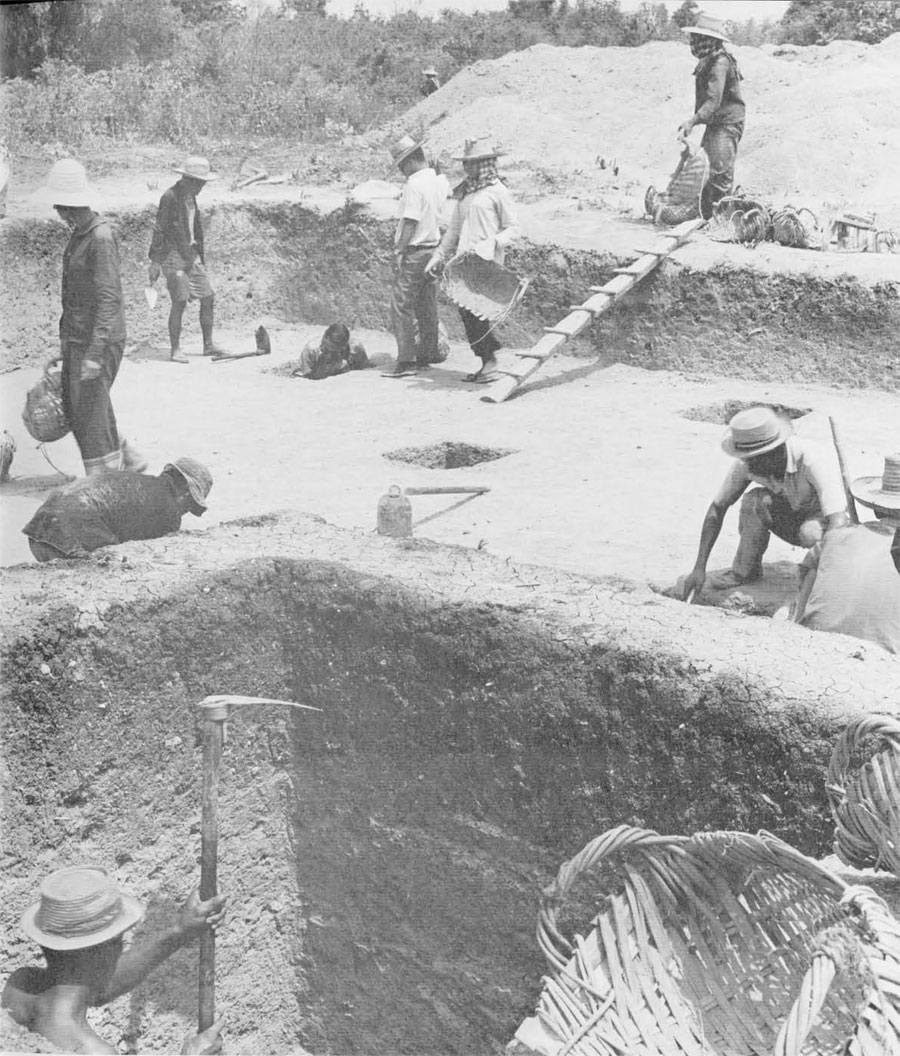
During the early months of 1966 I made a tour of South Asia to assess some of the archaeological possibilities in countries other than Pakistan. India, Ceylon, and Afghanistan were visited. Sites, museums, and archaeological persons were visited and tentative plans were made for projects in Ceylon and Afghanistan. The tour ended with a visit to Indonesia. This part of the trip was made primarily in the name of Asia Society of New York whose Indonesia Council was eager to attempt a resumption of cultural ties with the troubled Indonesian Republic. Unhappily the visit coincided with one of the more severe rashes of civil disorder, so it was impossible to travel outside of the capital, Djakarta. In fact, it was difficult to leave the hotel during most of the time but, nevertheless, successful and very promising contacts were made with the officers of the Department of Archaeology. Mutual interests and problems were discussed and a start was made toward some eventual cooperation between Indonesian and American archaeologists and art historians.
In February 1967 I made another South Asian tour to pursue and finalize some of the proposals of the previous tour. A five-year contract was negotiated with the Government of Afghanistan We expressed out interest in Seistan, the remote, now deserty area in the southwestern part of the country. The contract allowed first for excavations at the site of Sorkh Dagh (Nad-i-Ali) for extensive surveying of the entire Seistan region for “prehistoric” remains. The basic steps were thus completed for renewal of University Museum archaeological activities in that remote and utterly fascinating country—Afghanistan. In Ceylon, more detailed negotiations were conducted for a University Museum expedition. Dr. Vimala Begley, Assistant Curator of the Section, was to begin excavations at a northern site—perhaps a Roman seaport—during the summer of 1968. Unfortunately, the project fell victim to the economic cutbacks of this year.
From Ceylon I continued on to Thailand. Attention had been drawn to the archaeological possibilities for us there by Mr. William Kohler. Through the courtesy of the Thailand Fine Arts Department and National Museum in Bangkok a vehicle was provided for my use. Visits were made to several large historical sites in central and southern Thailand and to the newly discovered early Buddhist site of Chansen. Chansen is the modern name of a small but important village about one hundred miles north of Bangkok. Part of the present village is situated on what was obviously an ancient town. Objects found on the surface indicated that the site was—partially at least—of the Dvaravati period of approximately the 6th to the 10th centuries A.D. Both because of its potential historical importance and because of its physical nature it promised to be a rewarding place for excavation. An agreement for a three-year project was concluded with the Fine Arts Department. Emphasis was to be placed on providing field training for Thai university students and National Museum personnel. The February 1967 tour thus provided us with considerable new and fascinating work in important areas of South and Southeast Asia.
The winter of 1967-68 proved to be the most active year in the Section’s short history. First came the Afghanistan project which was made possible by a two-year National Science Foundation grant, a grant from the American Philosophical Society, and generous private contributions. Our small staff (Walter O. Heinze of Swarthmore, Regnar and Chrisa Kearton of the Museum) endured two months of bitter cold, sand storms, and ridiculously difficult traveling conditions. In two red Land Rover station wagons, accompanied by two representatives of the Afghan Institute of Archaeology, a cook, and a driver-guide, we left the snow and ice of Kabul for we knew not what in Seistan. To save time and bumps we decided to take the route across the Dasht-i-Margo (“Desert of Death”), the forbidding desert plateau of southern Afghanistan. The delights of this region were most recently popularized in James Michener’s book Caravans. After descending from the plateau and winding for miles across salt flats and around the innumerable abandoned and collapsing 14th century Islamic buildings, we arrived at Zarenj, the new capital of Chakhansur Province. Temporary accommodations were secured in the local “hotel” by the Governor until we were able to rent a new but unfinished house (no doors or windows).

The huge mound of Nad-i-Ali was visible about four miles to the north—an Islamic city presumably destroyed by Tamerlane in the 14th century. The name, Nad-i-Ali, has been mistakenly applied to other sites in the area. Actually, the sites we were interested in are about one mile to the east. The twin mounds of Sorkh Dagh (“Red Hill”) and Sefid Dagh (“White Hill”) were originally investigated by French archaeologists in 1936. Their claims of the presence of early painted pottery at the site of Sorkh Dagh were what led us to a reinvestigation of the area. The archaeological results of our new work at the site seemed at first to be disappointing. Test excavations at several points around the base of the mound revealed no occupation levels at all. The debris, from the surface down to virgin soil, was merely wash and collapse from the top of the mound which proved to stand some ninety feet high above the original ground level. It was obvious that we did not have a normal occupation site but rather a compact, steep-sided complex having all the occupation on the very top. The French in 1936 had dug a tremendous pit into the top of the mound. We decided to reopen and expand their pit in hopes of learning something about the core of this peculiar mound. After a week of most difficult and uncomfortable work, most of the windblown and collapsed debris was cleared from half of the pit. We found ourselves on–actually in—a solid mass of sun-dried brickwork such as was described in the brief French report. Because we were still some sixty feet above natural soil level, it was logical to assume—as had the French—that this was merely a brick platform or filling below which would certainly be found remains of earlier cultures. In what may prove to be one of the oddest excavations in Afghanistan’s history, Mr. Kearton directed his excavation crew down through more than forty-five feet of solid brick! It finally became impossible to continue because of the confined space of the shaft and because of the blinding dust and sand which worsened daily. However, it seems almost certain now that Sorkh Dagh, and its twin site Sefid Dagh, consist basically of massive, solid mud brick platforms upon which structures of baked brick (some decorated in white and blue) were erected. Nothing remains of these structures on Sefid Dagh, but enough of the foundations survive at Sorkh Dagh to give an impression of their original size, if not their function. Preliminary studies of the ceramics found on top of the mound and in the debris washed down its sides indicate nothing earlier than the first millennium B.C. The majority of the sherds and some small objects can be attributed to the Median-Achaemenid period, with some of the types having parallels at Kushan-period sites in northern Afghanistan. Five hundred years B.C. or so thus seems to be about the earliest we can date the Nad-i-Ali region sites. The same conclusion can be made from the material collected by other surveys in central and northern Afghan Seistan. Perhaps the ancient outflow of the Helmand and smaller rivers made this area uninhabitable prior to Persian times. Here again is an excellent opportunity for archaeologists and natural scientists to tackle a common problem.
In late March, following completion of the Seistan project, I proceeded to Thailand where I joined Bennet Bronson of our Anthropology Department for the first season’s work at Chansen. We were accompanied to the site by several officers of the Bangkok National Museum and the Fine Arts Department and by several students from Silpakorn University in Bangkok. All arrangements had been made for us in advance, including the use of a Land Rover, a house in Chansen village, and a Chinese cook. The University Museum, through the generosity of the Haas Foundation, provided Bronson and me to conduct the excavations and training program. Our expedition staff, including students, averaged fifteen. About forty villagers—men and women—were hired for the excavations.
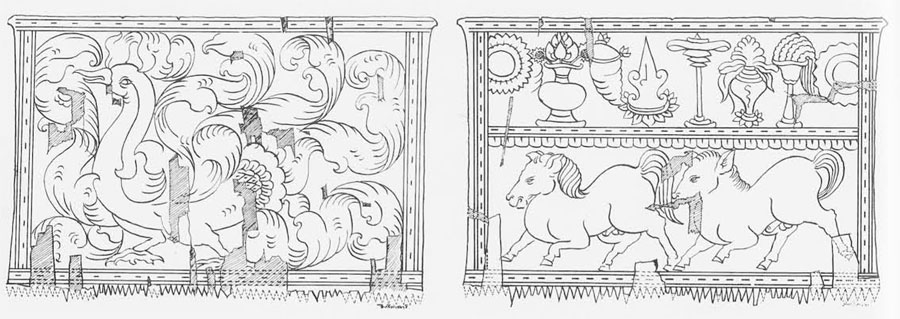
The ancient town at Chansen was approximately circular in shape and surrounded by a moat. Surface indications suggest that elevated roads of packed earth led out from the town in at least the north and south directions. Eight locations were excavated. Although remains of baked bricks were found on the surface, we found no brick structures in situ. The town site has been under intensive cultivation for years and apparently what brick structures originally existed have been dismantled by modern farmers.
Apart from the rewards and pleasures of a successful training program, unexpected archaeological and historical discoveries were also made. A fine sequence of ceramics was obtained—the first of its kind in Thailand. Several unique art objects were excavated, the most important being an ivory comb, elaborately decorated with motifs which have been tentatively attributed to a 6th of 7th century A.D. Indian workshop. The comb, found in a rubbish pit about three meters below the surface, was reassembled from a hundred or so fragments and is now undergoing professional restoration at the National Museum in Bangkok. Eight carbon samples were collected from the excavations, samples which are presently being tested by our C-14 laboratory. These will provide the first absolute dates for this important early Buddhist period of Thailand. Mr. Bronson also conducted surveys in the region surrounding Chansen and made test excavations and surface collections at various sites of approximately the same historical period of Chansen. The stratified ceramic material from Chansen provides an excellent yardstick for evaluating other early sites in central Thailand. It also provides correlations with the ancient Funan culture of Vietnam—known by the French excavations at Oc-Eo southwest of Saigon—and with the Khmers of Cambodia.
In addition to our own field projects this year, the South Asia Section provided financial support for archaeological and environmental research in northwestern India. Mr. Raikes, the hydrologist who worked with us in Pakistan, continued his environmental studies at the Harappan-period site of Kalibangan in Rajasthan. The site is one of several in what is now a desiccated and largely abandoned region of India. Raikes is investigating possible causes for the change in the natural environment and its effects upon the ancient Indus civilization. This new research bears directly on the basic problem which confronted us at Mohenjo-daro—namely, the interplay between natural and human forces during the time of South Asia’s earliest civilization.
Mention was made above of the proposed Ceylon project of Dr. Begley. It is hoped that sometime in the future funds can be found to allow the excavation of her possible Roman seaport site to begin. Unfortunately for us here in Philadelphia, Dr. Begley has left the Museum this fall to join her husband in Iowa.
What of the future? Present plans are for me to return to Afghan Seistan in early January. Additional work may be conducted at Sorkh Dagh to clarify some of the architectural mysteries. I also plan to extend our survey for Chalcolithic and Bronze Age sites down into the extreme southwestern tip of Seistan where early material has previously been reported. Another related project, which I hope can be attempted this coming winter, is a survey of the southern coast of Iran for ancient seaports. This is a logical extension of our Makran coast survey of Pakistan in 1960. It could provide the evidence for long-assumed, but never sought, sea-trade links between the Persian Gulf and South Asia. The Thailand project should continue this winter, hopefully with the cooperation of Mr. Bronson and the help of a new member of our staff, Miss Elizabeth Lyons, a long-time resident of and expert on Southeast Asia. The Section has the honor this year of including a new Research Associate, Mr. Mohammad Rafique Mughal of the Pakistan Department of Archaeology who is here working on his Doctoral degree.
Despite some early morning haze, the sun is beginning to shine!


